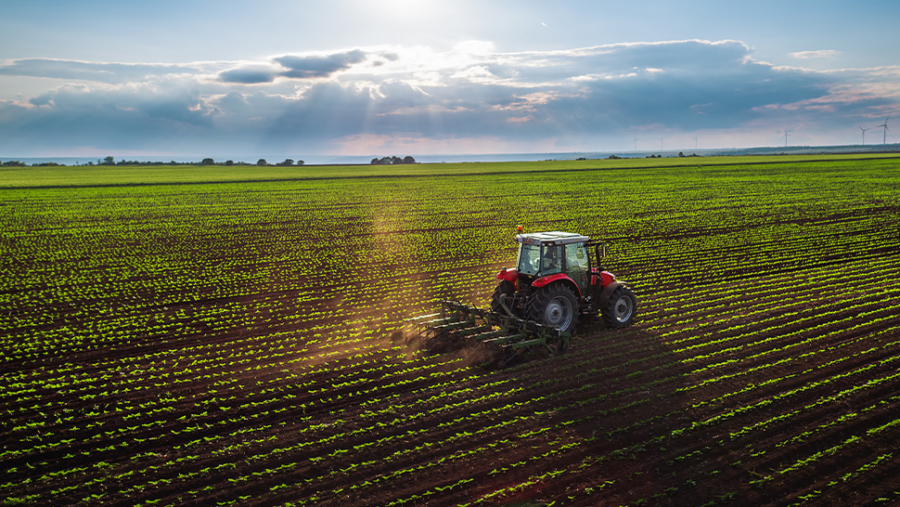
Protecting your agricultural land from new public rights – Sections 31(6) and 15A Landowner Statements
25th November 2022

It is an understandable fear of agricultural landowners that one day they may receive notice of an application to record new public rights on their land. It may be a new public footpath or bridleway, or a new village green. Significant areas of land may be owned and managed, which may mean it is difficult to practically monitor public activity such as to prevent it by actions.
So what else can a landowner do to protect their land from new public rights being created without their consent?
S31(6) and S15A Landowner Statements
The first and easiest preventative action every agricultural landowner should do is to lodge Landowner Statements under section 31(6) of the Highways Act 1980 (“the 1980 Act”) and Section 15A of the Commons Act 2006 (“the 2006 Act”). Both can be lodged separately or together in a combined application form. This is submitted to the local highway authority and commons registration authority respectively – which will be the same authority being either the county council or unitary authority for the area. There will be a fee charged by the council for the application.
Even if you don’t think there is currently a risk to your land, lodging S31(6) and S15A Landowner Statements now will provide enduring protection and peace of mind in case your circumstances change.
Although similar there are key differences in the legal operation and effect of S31(6) and S15A Landowner Statements as explained below.
S31(6) Landowner Statements
Section 31(1) of the 1980 Act provides for deemed dedication of new public rights which are created following uninterrupted public use without permission for 20 years or more where, importantly, there is ‘insufficient evidence’ that there was no intention of the landowner during that period to dedicate it.
The benefit of S31(6) Landowner Statements is that they provide ‘sufficient evidence’ of a lack of intention of the landowner to dedicate unless there is clear evidence of a contrary intention – such as a landowner signing an agreement to dedicate.
The protection for landowners under section 31(6) is a two-step procedure. The first step is that a landowner must deposit a map identifying their landownership and a prescribed statement indicating whether they admit to any existing dedicated public rights of way over the land (the ‘deposit date’).
The second step is that the landowner must lodge a prescribed declaration stating that they have not dedicated any new public rights of way since such date (’the declaration date’) any time before the end of 20 years (if in England, or 10 years in Wales) from the deposit date. This second step is then repeated for the same period but from the previous declaration date.
Provided the landowner repeats the declaration within the timescales noted above then a public right of way through public use cannot be created from the first step’s deposit date without proof of the landowner intending to dedicate the route to the public.
However, S31(6) Landowner Statements will not prevent applications for historical unrecorded public rights of way which are claimed to already exist – for example old enclosures. Unfortunately, landowners cannot take measures to prevent such applications and can only challenge the historic evidence once they are made.
S15A Landowner Statements
Section 15(1) of the 2006 Act gives the right for a person to apply to register a new town or village green where a significant number of the inhabitants have indulged (without permission of the landowner) in sports and pastimes on the land for a period of at least 20 years.
The public use must be continuing without permission at the time of the application, or had ceased no more than least one year prior to the application (in England, or 2 years in Wales). The benefit of the S15A Landowner Statement is that every time it is made to the council it will bring an end to any accruing period of public use. The required 20 years’ period of public use will then restart.
The protection for landowners under section 15A is a simple one-step procedure whereby the landowner deposits a prescribed statement and plan of their land with the council. As long as this is done within every 20 year period, then the land is protected from a successful claim of village green rights. This is usually easiest and best, and can be done at the same time as the S31(6) Landowner Statements.
If on the first deposited S15A Landowner Statement there has potentially been an existing and continuing 20 years’ period then, as mentioned above, an application would need to be made within one year (in England, or two years in Wales) or the right to apply for village green rights will be lost.
Permissive Licences
S31(6) and S15A Landowner Statements do not prevent landowners from permitting public use on their land, and any such permissions will not invalidate the statements. However, any permitted use should still be clearly documented. This could be by way of signage or a licence or permissive agreement which documents the terms of the permitted use of the land including the rights and liabilities of the parties and the duration of such licence.
Most public users will most likely not be aware of any S31(6) and S15A Landowner Statements (although they are published on council websites). Therefore, signage and licences will help manage the public expectations and avoid future conflict. Importantly, signage and licences will ensure that a landowner’s permission is not interpretated as contrary evidence to a S31(6) Landowner Statement of an intention to dedicate.
Signage and physical works
S31(6) and S15A Landowner Statements will not prevent unauthorised public use and trespass. Again, most public users will likely not know of the statements. Therefore, if you want to physically prevent such use you will still need to ensure there is appropriate signage and security preventing access. Such actions also serve to prevent the creation of new public rights of way and village greens and therefore can act as an additional safety net in case you forget to renew your S31(6) or S15A Landowner Statements.










